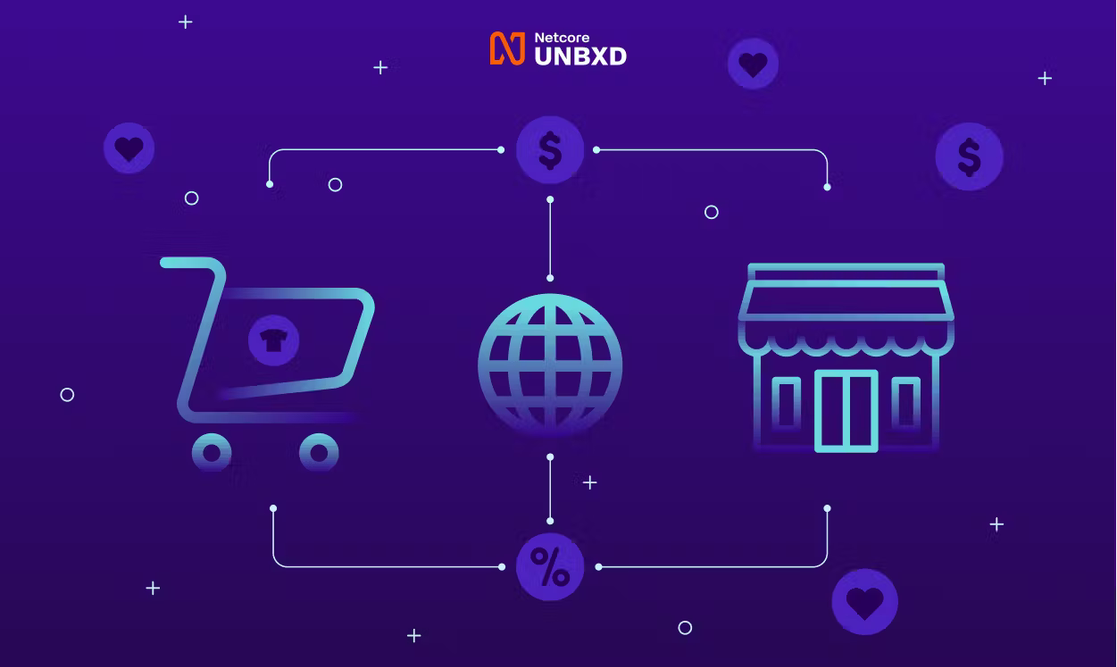- ProductsSearch and BrowseRecommendationsCustomer Engagement


As we chart our course through the dynamic world of ecommerce, it's vital that we arm ourselves with effective strategies and innovative technologies. There are two buzzwords on the market today: headless commerce and composable commerce. Despite their similarities, it's important to distinguish the two.
What do they mean, and how do they work? Let’s get right into it.
What is headless commerce?
There are two parts to headless commerce: the "head" (the user interface customers interact with) and the "body" (backend operations). With this capability, businesses can customize user experiences across multiple touchpoints, including mobile, web, social media, and IoT.
What is composable commerce?
Composable Commerce takes headless commerce a step further. Businesses can choose the best-of-breed commerce solutions that best suit their needs and assemble them to satisfy their business requirements. Every function of the system is a separate "module," meaning it can be removed, replaced, or added as needed without impacting other dependent areas of business operations and user experience.
Comparing headless and composable commerce
Amazon exemplifies a unique blend of headless and composable commerce, courtesy of its custom-built, microservices-driven platform. This platform separates front-end presentation from back-end operations, enabling a high degree of customization and flexibility in user interfaces.
The goal of headless commerce is to simplify the development of flexible user interfaces by focusing on customer-centric design. By contrast, composable commerce offers this flexibility to the entire ecommerce operation, allowing each component to be customized independently for scalability, similar to Amazon's. In both cases, customers' needs and technological advances will be rapidly adapted to.
Understanding the difference between headless and composable commerce platforms is vital, especially since the concept of composable platforms being also headless often leads to confusion.
Why old systems can’t keep up?
In this era of instant gratification, shoppers want to locate their desired items quickly and efficiently. With an expectation of finding what they need in just 6 seconds, ecommerce businesses face the challenge of meeting these modern shopper demands. However, traditional monolithic systems are struggling to keep up and are grappling with the following difficulties:
Technology lock-in: Old systems often rely on proprietary technologies or specific vendors, limiting flexibility It keeps them locked in.
Inflexibility: Traditional systems hinder innovation due to their tightly knitted or coupled nature, making updates, upgrades, and modifications challenging.
Limited scalability: Monolithic architectures struggle to keep up with increasing demands and traffic.
Lengthy time-to-market: Old systems necessitate significant development and testing efforts for new features, resulting in slow time-to-market.
Limited personalization: Older systems provide limited options and scope for personalization and customization.
Poor cross-channel integration: Traditional systems struggle with seamless integration across multiple channels due to outdated architecture or software, leading to disjointed customer experiences.
MACH: A departure from traditional software architecture
Building digital experiences that are liked and effectively consumed by everyone is not very easy to achieve. More so when you are trying to provide a custom look and feel without compromising on resources, responsiveness, engagement, and of course, revenue. The world is moving towards convenience, and you should too!
MACH architecture is a modern composable software strategy based on smaller solutions that seamlessly integrate with one another. It is not just a set of technical principles but also a strategic approach to digital transformation. Tech leaders see MACH technologies as the future of architecture, with 79% planning to increase investment over the next few years.
Introducing MACH architecture
MACH stands for Microservices, API-first, Cloud-native, and Headless Commerce. This set of principles is transforming how we build and design modern software applications. MACH technologies follow a composable, pluggable pattern, ensuring your ecommerce platform remains agile, adaptable, and customer-centric.
Let's take a look at the essential building blocks of a robust ecommerce architecture
Key components of modern ecommerce architecture

Microservices
Microservice platforms are standalone, self-contained services that perform specific functions with clear inputs and outputs. This approach offers greater flexibility since you can update specific components without taking the entire application offline.
API-first
Businesses can create flexible, modular applications with API-first design which prioritizes API development before creating user interfaces.
Cloud-native
Cloud-native applications are designed specifically for the cloud environment, making them highly scalable, fault-tolerant, and adaptable.
Headless commerce
Headless commerce decouples the front-end presentation layer from the back-end commerce functionality. This allows for more freedom in designing and optimizing user interfaces while maintaining a robust and scalable back-end system.
We at Netcore Unbxd leverage a headless approach to provide our customers with greater flexibility, personalization, and performance in their product discovery experiences. By being headless, we can also offer omnichannel compatibility, allowing for seamless integration with various channels and consistent customer experiences.
Wrapping up
In today's competitive digital market, ecommerce businesses must adopt cutting-edge technology and approaches to stay ahead. MACH architecture provides the agility, scalability, and adaptability needed to thrive in this rapidly changing landscape.
Leading brands have already demonstrated the immense benefits of embracing MACH principles. By adopting this future-proof architecture, your business can reap those rewards and position itself as a leader in the industry.
You can create an unparalleled ecommerce experience by adopting the MACH architecture and navigating the challenges and opportunities of the digital world. Your business will not only survive but flourish as you capitalize on the advantages of MACH technology.

